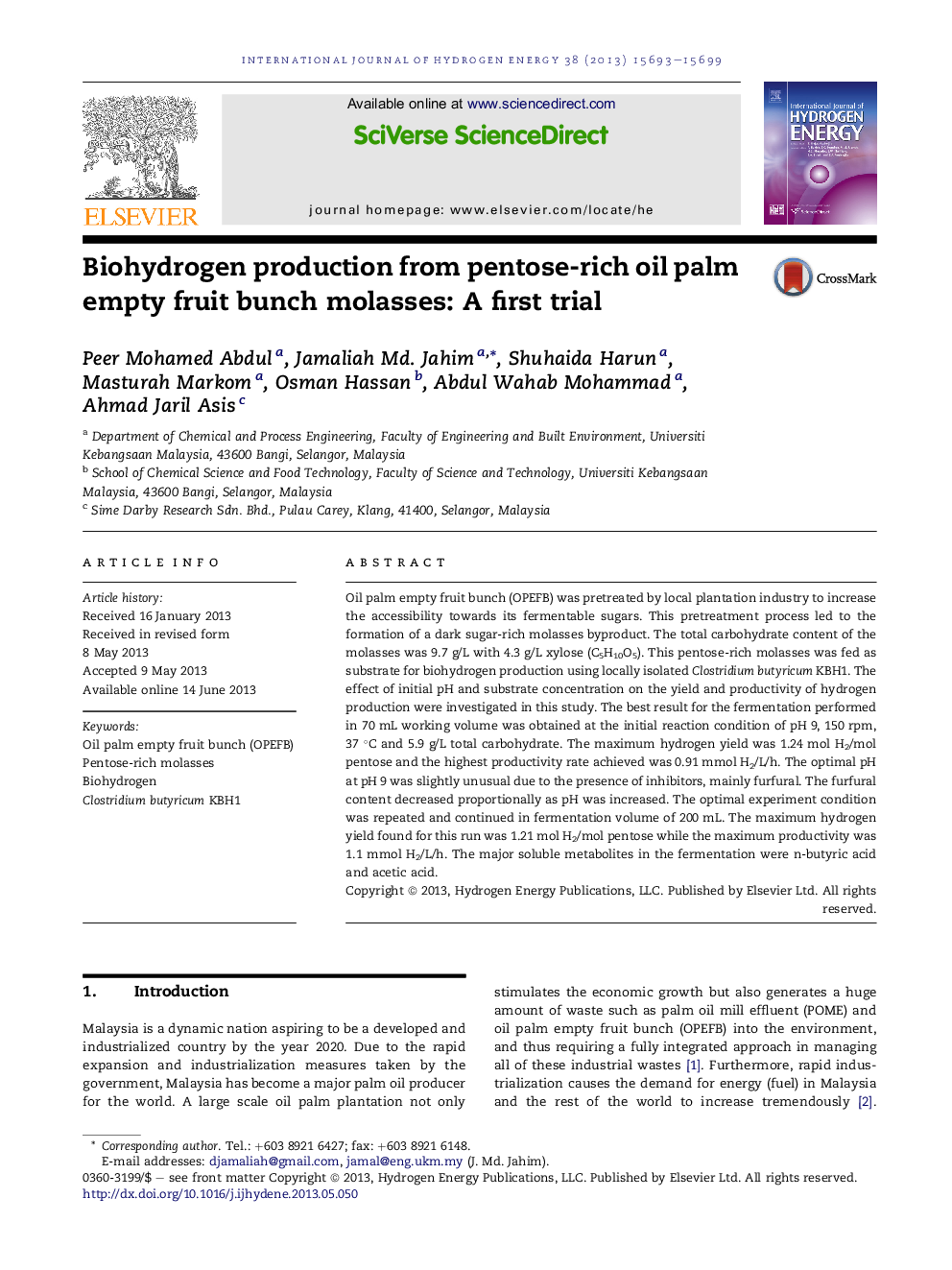| Article ID | Journal | Published Year | Pages | File Type |
|---|---|---|---|---|
| 7721623 | International Journal of Hydrogen Energy | 2013 | 7 Pages |
Abstract
Oil palm empty fruit bunch (OPEFB) was pretreated by local plantation industry to increase the accessibility towards its fermentable sugars. This pretreatment process led to the formation of a dark sugar-rich molasses byproduct. The total carbohydrate content of the molasses was 9.7 g/L with 4.3 g/L xylose (C5H10O5). This pentose-rich molasses was fed as substrate for biohydrogen production using locally isolated Clostridium butyricum KBH1. The effect of initial pH and substrate concentration on the yield and productivity of hydrogen production were investigated in this study. The best result for the fermentation performed in 70 mL working volume was obtained at the initial reaction condition of pH 9, 150 rpm, 37 °C and 5.9 g/L total carbohydrate. The maximum hydrogen yield was 1.24 mol H2/mol pentose and the highest productivity rate achieved was 0.91 mmol H2/L/h. The optimal pH at pH 9 was slightly unusual due to the presence of inhibitors, mainly furfural. The furfural content decreased proportionally as pH was increased. The optimal experiment condition was repeated and continued in fermentation volume of 200 mL. The maximum hydrogen yield found for this run was 1.21 mol H2/mol pentose while the maximum productivity was 1.1 mmol H2/L/h. The major soluble metabolites in the fermentation were n-butyric acid and acetic acid.
Keywords
Related Topics
Physical Sciences and Engineering
Chemistry
Electrochemistry
Authors
Peer Mohamed Abdul, Jamaliah Md. Jahim, Shuhaida Harun, Masturah Markom, Osman Hassan, Abdul Wahab Mohammad, Ahmad Jaril Asis,
